This article was co-authored by Patricia Somers, RD, PhD. Patricia Somers is a Registered Dietitian and an Associate Professor of the Department of Educational Leadership and Policy at the University of Texas at Austin. She received her RD from the Academy of Nutrition and Dietetics in 1979 and her PhD in Educational Administration (Higher Education Specialization) from the University of New Orleans. She received an Emerging Scholar Award from the American Association of University Women and the Faculty Excellence Award in Research from the University of Arkansas, Little Rock.
This article has been viewed 60,516 times.
Vitamin C is a powerful antioxidant that supports the immune system and is critical for the normal repair of wounds and tissue injury, including cuts, sprains, strains, burns and broken or fractured bones.[1] Vitamin C may also reduce inflammation, slow down the effects of aging, help treat cancer, and reduce the risk of heart disease and stroke.[2] Vitamin C is a water-soluble vitamin, and there are biological problems getting a water-soluble nutrient into a fat-soluble environment — liposomal vitamin C solves that problem. Liposomes are fat-soluble vehicles that carry nutrients to the body's cells.[3] You can even make your own liposomal vitamin C by following some simple steps.
Steps
Making Basic Liposomal Vitamin C
-
1Gather your ingredients. To make liposomal vitamin C, you will need some special ingredients and tools. You can find most of the ingredients in a well-stocked grocery store, but you may also order them online. For example, lecithin may be difficult to find in a grocery store. To make liposomal vitamin C, you will need:
- Distilled water
- Vodka (40% alcohol)
- Vitamin C powder or tablets (also sold as ascorbic acid)
- Powdered lecithin derived from soy or sunflower seeds (make certain the product you buy does not contain GMOs)
- High power blender
- Scale that measures in grams or ounces
- Large glass container, such as a measuring cup or beaker
- Large mason jar
-
2Measure out nine ounces of distilled water and 12 ounces of vodka. It is necessary to use steam-distilled water for this recipe. Do not use regular tap water. Measure and pour the water and the vodka into the glass container. If you have a measuring cup with measurements on the side, then this is ideal.Advertisement
-
3Add 6 ounces of vitamin C powder to the water. Measure out 6 ounces of vitamin C (ascorbic acid) powder and add it to the vodka and water mixture. Stir the vitamin C into the water and vodka until the vitamin C is completely dissolved.
- To make sure that the vitamin C powder is fully dissolved, you may also want to heat this mixture in a ceramic pan until it reaches 104 degrees Fahrenheit (40 degrees Celsius).
- If you are using vitamin C tablets, then you will need to crush them first. You can use a mortar and pestle if you have one or put tablets into a plastic bag and use a rolling pin to crush them.
-
4Blend in the lecithin. You will need to weigh out 7 ounces of lecithin and add it to the vitamin C, water, and vodka mixture. You may use soy-derived or sunflower-derived lecithin for this recipe. Then Pour the vitamin C, water, vodka, and lecithin into the blender.
- Blend the ingredients on high for about four minutes and then put the blender in the refrigerator for a few hours. Then take the blender out and blend the ingredients for four minutes again and then return the mixture to the refrigerator for a few more hours. Continue to blend and refrigerate five or six times over the next 24 hours.
-
5Transfer your liposomal vitamin C into a large mason jar. At this point, you have created liposomal vitamin C that you can store and use. It is not necessary to do anything else. Using an ultrasonic unit will increase the number of liposomes that you create, but it is not absolutely necessary since you have already created some liposomes by blending the ingredients.
Improving Liposomal Vitamin C
-
1Gather materials. Keep in mind that improving your liposomal vitamin C with an ultrasonic unit is optional. If you do not already have the materials that you need to improve your liposomal vitamin C, then you will probably have to order some tools online, such as the glass beaker and ultrasonic unit. You will need:
- One recipe of basic liposomal vitamin C
- High powered blender
- 1-liter glass beaker
- Ultrasonic unit
- Plastic wrap
- Wooden spoon
-
2Blend the liposomal vitamin C one more time. Blend the liposomal vitamin C until it feels warm. This may take several minutes. Feel the blender to detect the temperature. The temperature of the ingredients should be about 95 degrees Fahrenheit (35 degrees Celsius).
-
3Transfer the basic liposomal vitamin C into a glass beaker. After you have blended the vitamin C until it is warm, then transfer it into your glass beaker. The beaker that you use will need to be large enough to hold all of the blended ingredients and still fit into your ultrasonic unit. You may want to check before you transfer your liposomal vitamin C.
-
4Remove the bubbles with the ultrasonic unit. Pace the beaker with the liposomal vitamin C into the ultrasonic unit for about 30 minutes. The ultrasonic unit will push the bubbles to the surface. After 30 minutes is up, cover the beaker in plastic wrap and place the beaker into the refrigerator for about an hour and then use a wooden spoon to skim off the bubbles that have collected on the surface.
- Make sure that you follow the manufacturer’s directions for how to use your ultrasonic unit.
-
5Put liposomal vitamin C back into your ultrasonic unit. Let the ultrasonic unit run until the temperature of the vitamin C mixture reaches 90 degrees Fahrenheit (32 degrees Celsius). This will help to kill any bacteria that might be present in your liposomal vitamin C.
Storing and Using Liposomal Vitamin C
-
1Pour the liposomal vitamin C into a glass jar. When your liposomal vitamin C is ready, you can transfer it into a glass jar. Make sure that the jar has a tight-fitting lid so that you can close it and not worry about it leaking. A mason jar works well for storing your liposomal vitamin C.
-
2Store liposomal vitamin C in the refrigerator. Keeping your liposomal vitamin C will help prevent spoilage, but keep in mind that it has a short shelf-life. Your liposomal vitamin C will only keep for about three to four days, so you will need to make a batch twice per week if you want to use it regularly.
-
3Take one tablespoon of liposomal vitamin C every day. Liposomal vitamin C is a potent supplement, so you only need to take one tablespoon per day. For best absorption, you should take it on an empty stomach. You may also want to mix it with juice or water because Vitamin C is quite sour.
-
4Keep in mind that Vitamin C can increase the absorption of iron in foods. Vitamin C increases the amount of iron that you absorb from foods that contain iron or from iron supplements.[4] For this reason, do not exceed your daily allowance of iron from food or supplements.
- Some sources say to wait at least an hour after taking liposomal vitamin C before eating red meat.
-
5Stop taking liposomal vitamin C prior to a blood glucose test. Vitamin C can alter the results of a blood glucose test, so you will need to stop taking it about two to three days before a blood glucose test to prevent this from happening.[5] You should also let your doctor know that you have been taking liposomal vitamin C.
-
6Check with your physician first if you have any medical conditions. Liposomal vitamin C may not be recommended in certain situations. Talk to your physician before taking liposomal Vitamin C if you:[6]
- Have diabetes or kidney disease
- Are on a sodium-restricted diet
- Are taking blood thinners
References
- ↑ http://www.mayoclinic.org/drugs-supplements/vitamin-c/background/hrb-20060322
- ↑ http://lpi.oregonstate.edu/mic/vitamins/vitamin-C
- ↑ http://www.naturalhealth365.com/liposomal-c.html/
- ↑ http://www.drugs.com/ppa/ascorbic-acid-vitamin-c.htm
- ↑ http://www.drugs.com/ppa/ascorbic-acid-vitamin-c.htm
- ↑ http://www.drugs.com/ppa/ascorbic-acid-vitamin-c.htm






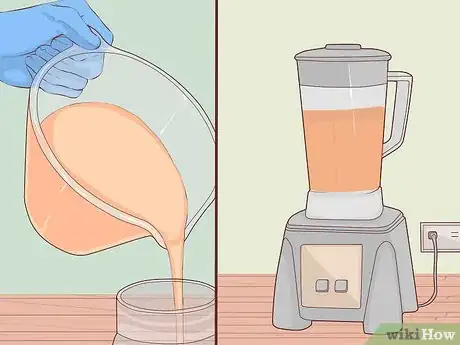
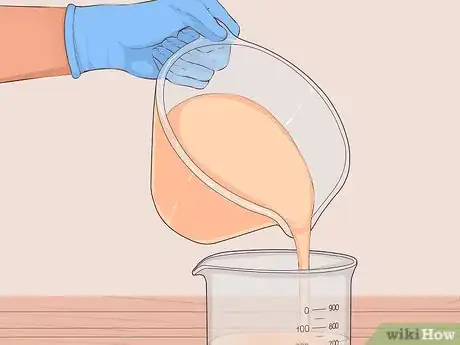

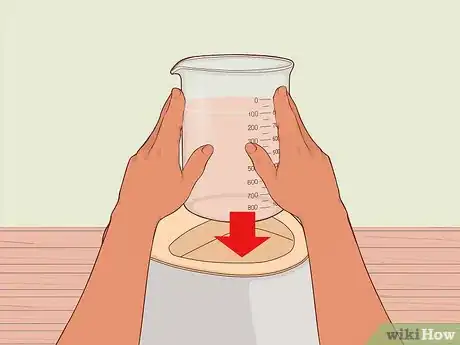




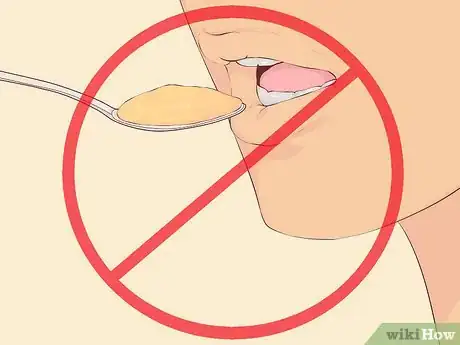

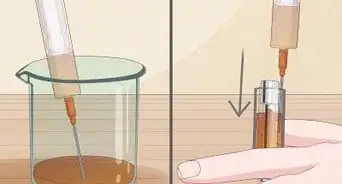




















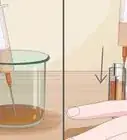

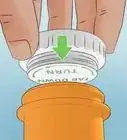




































Medical Disclaimer
The content of this article is not intended to be a substitute for professional medical advice, examination, diagnosis, or treatment. You should always contact your doctor or other qualified healthcare professional before starting, changing, or stopping any kind of health treatment.
Read More...